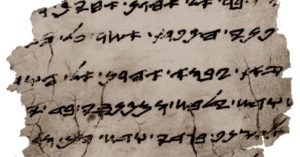In the attached video, Dr. Michael Brown tackles the idea addressed back in September here in the blog of Hebrew pictographs (pictograms). He does a very good job of covering the issue, so I thought I would share it here. Enjoy!
Tag: Paleo Hebrew
I take the first step into this blog post with a bit of trepidation. I intend to broach a subject that Hebrew teachers generally avoid, given its controversial nature. In fact, one of Krashen’s hypotheses about the Natural Approach to second-language acquisition is that language teachers must do what they can to lower the “affective filter” (pp. 37–39), which would block students from connecting emotionally with the language and would discourage them from taking independent strides toward putting themselves into positions for receiving comprehensible input and discovering optimal input materials for themselves. It is my hope that I won’t be putting up any blocks for those who sincerely wish to find their way into acquiring and learning Hebrew in whatever form.
I do, however, feel compelled to offer a voice against some of the wild things that are becoming so popular on the internet and are contrary to everything scientific and evidentiary. There are two odd theories in particular: Edenics, the theory that all world languages have descended from Hebrew in some way; and, some popular idea that words in Hebrew derive their “real meaning” from meanings given to their composite letters. I will not confront Edenics at this time, but those interested may read these two answers on the Linguistics subsection of Stack Exchange (here and here) to receive great responses on Edenics. I want to offer some direction to those who are convinced by the second theory.
